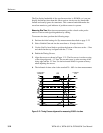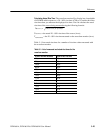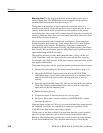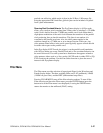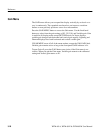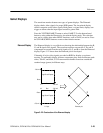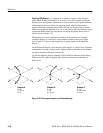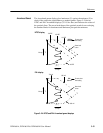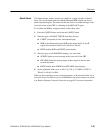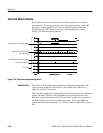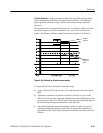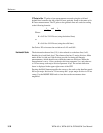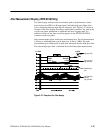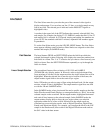
Reference
3–32
WFM 601A, WFM 601E & WFM 601M User Manual
Signals exceeding the luminance amplitude gamut extend above the top
horizontal limit (top electronic graticule line). Signals exceeding the luminance
plus peak chrominance amplitude gamut extend beyond the upper and lower
diagonal limits. The bottom horizontal line shows the minimum allowed
luminance level of 7.5 IRE for NTSC and 0 mV for PAL. See Figure 3–24.
Graticule Format. The electronic graticule is different for PAL and NTSC formats.
Use the CONFIG GAMUT menu to select the Limit Format. The AUTO
selection in the Gamut Configure menu determines the correct graticule from
your input signal. A field rate of 60 Hz indicates NTSC and 50 Hz indicates PAL.
NTSC and PAL Limit Cursors. The alarm limit cursor sets the upper amplitude
point at which an alarm is triggered. In Figure 3–24, the NTSC limit cursor is set
to 120 IRE, as indicated at the upper right of the Arrowhead graticule. Set the
NTSC limit cursor to 100, 110, 120, or 131 IRE to fit your operating practices.
Likewise set the PAL limit cursor to 700 mV or 950 mV. Use the CONFIG
GAMUT menu to set the gamut level.
For information on setting the gamut alarm, refer to Gamut Alarms on
page 3–33.
Checking Composite Gamut. The Arrowhead display provides an automated
check on adherence to RGB or composite gamut standards with the Alarm
feature discussed on page 3–33. To perform an automated gamut check, enable
the alarm and set the level. The automated check alerts you whenever the signal
exceeds the set limit.
Another useful Arrowhead function is a measure of how well the active video
signal is using the dynamic range of video channel. A properly adjusted signal
should be centered in the arrowhead graticule and have transitions that approach
all the limits.



